Country guides

Things to do in Philippines
The Philippines, a mesmerising archipelago of thousands of islands, offers an extraordinary blend of bustling cities, serene underwater landscapes, and lush, unspoilt beauty. From world-renowned surf breaks and pristine dive sites to sun-drenched beaches perfect for lounging, this Southeast Asian paradise promises an unparalleled adventure. Yet beyond its natural wonders, the destination boasts a rich cultural tapestry, waiting to be explored.
Manila is the bustling gateway to the islands and embodies a dynamic energy where modernity and history converge. Here, Spanish-colonial architecture graces the streets alongside museums that allow a deep dive into the country's storied past. Island-hopping excursions reveal a breath-taking sight as sailors glide over turquoise waters toward lush, jungle-covered beaches, a scene straight out of a dream.
For those seeking solitude and adventure, the Philippines' remote regions serve as a sanctuary. With untouched landscapes and hidden trails, they provide a haven for explorers, adventurers and hikers alike. Whether along the coastline or through the mountains, each wonderland holds a unique, magnetic pull.
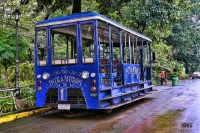
Intramuros
Intramuros is one of the oldest parts of Manila. Located on the southern bank of the Pasig River, the walled Spanish enclave is a feast of historic buildings and churches, many of …
Intramuros
Intramuros is one of the oldest parts of Manila. Located on the southern bank of the Pasig River, the walled Spanish enclave is a feast of historic buildings and churches, many of which are being or have been restored. Tourists can enjoy several parks, restaurants and galleries in the attractive district, along with learning about its intriguing past as a site of political imprisonment and execution. Today, it's a lush park full of pigeons and flowering trees, where visitors can ride along the promenade in horse-drawn carriages. History lovers should stop at the beautifully restored colonial residences in the Barrio San Luis too, which is filled with street artists and food stalls amid a festive atmosphere.
National Museum of the Philippines
The National Museum and Art Gallery of the Philippines showcases the cultural, natural and historical heritage of the islands. The large and comprehensive institution categorises i…
National Museum of the Philippines
The National Museum and Art Gallery of the Philippines showcases the cultural, natural and historical heritage of the islands. The large and comprehensive institution categorises its exhibits in five divisions, namely art, botany, zoology, geology and anthropology. Visitors will find the archipelago's oldest human remains in the museum's collection, as well as the remains of the San Diego Spanish galleon, which sank in Philippine waters in 1600. The institution is clean, well-kept and has good facilities, with photography permitted but not with flash. It remains a deeply interesting museum that's a worthwhile stop for travellers of all ages.
Website www.nationalmuseum.gov.ph
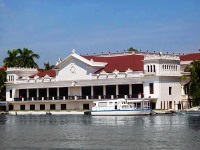
Malacanang Palace
The Malacanang Palace is the seat of government and official residence of the Philippines head of state. Situated on the north bank of the Pasig River, the villa has been a noble r…
Malacanang Palace
The Malacanang Palace is the seat of government and official residence of the Philippines head of state. Situated on the north bank of the Pasig River, the villa has been a noble residence since the 1800s, when it was built for a Spanish aristocrat. Today, visitors will instead find a museum featuring national treasures, historical artefacts and mementos from each Filipino ruler, including the notorious dictators Ferdinand and Imelda Marcos. The building itself is attractive and the rooms are furnished beautifully, with visitors enjoying great views over the river from some of the windows.
Website museums.gov.ph
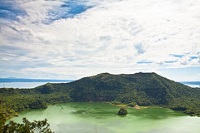
Tagaytay City
Tagaytay is one of the most-visited tourist destinations in the Philippines, and is located just south of Manila. The town's most famous attraction is the Taal Volcano, which sits …
Tagaytay City
Tagaytay is one of the most-visited tourist destinations in the Philippines, and is located just south of Manila. The town's most famous attraction is the Taal Volcano, which sits on an island in a lake, with another smaller lake in the vast crater. Known as the country's 'summer capital', Tagaytay offers a cool escape from Manila's often oppressive seasonal heat.
The area is home to numerous recreational activities, as well as top hotels and restaurants. Along with appreciating the stunning natural scenery, visitors can explore the famous 'Palace in the Sky', a mansion originally envisioned to host U.S. President Ronald Reagan during a planned state visit to the Philippines in the 1980s. However, after the assassination of opposition leader Benigno Aquino Jr., political tensions in the country grew, leading to Reagan's cancellation of the trip. As a result, the mansion remained unfinished, and its construction was abandoned.
Today, the site has been repurposed as a public park and viewing point, offering panoramic views of Taal Volcano and the surrounding landscapes. The site also features beautiful gardens, and its scenic terraces make it a popular spot for photo ops and relaxation.
Aside from sightseeing, Tagaytay has variety of activities for adventure enthusiasts, including golfing, horse riding, zip-lining, and even diving and snorkelling in nearby lakes. Whether travellers are looking to unwind in nature or seek an adrenaline rush, Tagaytay has something for everyone.
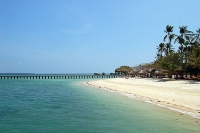
Palawan
The island of Palawan stretches from Luzon towards Malaysia. A must for nature lovers, it's thickly forested and accented by coves, lagoons and limestone cliffs. Puerto Princesa is…
Palawan
The island of Palawan stretches from Luzon towards Malaysia. A must for nature lovers, it's thickly forested and accented by coves, lagoons and limestone cliffs. Puerto Princesa is the primary gateway to the island, sporting hiking trails, spelunking opportunities and an underground river near Sabang. The small, lively beach town of El Nido is Palawan's most popular destination and is geared towards island hopping. From El Nido, travellers can choose to take a boat to the neighbouring island of Busuanga and the town of Coron. They will find fewer niceties than on Palawan's main island, but can explore the island's gorgeous aquamarine lakes and experience some of the best scuba diving in the region. The area is archaeologically significant too, with palaeolithic remains from 22,000 years ago discovered on the island.
Website www.palawan.gov.ph
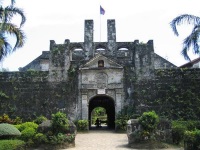
Fort San Pedro
Located in Cebu's wharf area, Fort San Pedro was the centre of the country's first Spanish settlement. Established in 1565, it began as a single triangular bastion and was expanded…
Fort San Pedro
Located in Cebu's wharf area, Fort San Pedro was the centre of the country's first Spanish settlement. Established in 1565, it began as a single triangular bastion and was expanded over the next 200 years. It has served a variety of purposes, such as being a watch-tower against pirate attacks in the 1700s, a prison for local rebels during the Philippine Revolution and a US army barracks. Today, the fort has been turned into a museum park, hosting cultural events, and student guides are usually on hand to show travellers around and share the fort's history.
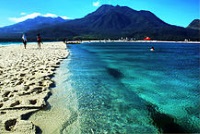
Camiguin
Situated on the north coast of Mindanao, the tiny island of Camiguin is renowned for having more volcanoes than municipalities. It's a relaxing paradise, where hot springs and stun…
Camiguin
Situated on the north coast of Mindanao, the tiny island of Camiguin is renowned for having more volcanoes than municipalities. It's a relaxing paradise, where hot springs and stunning beaches are the order of the day and visitors can climb Mount Hibok-Hibok or snorkel through a cemetery submerged in a volcanic eruption. Culture lovers should stop at some of the island's remaining colonial homes, buildings and churches, with Santa Rosario Church in Sagay and the San Nicolas de Tolentino Church in Mambajao among the island's best.
Website www.camiguin.gov.ph

Davao
A beautiful landscape of hills and fertile valleys surrounds Davao, with Mount Apo towering above all else. The potentially active volcano is the country's highest mountain. Many t…
Davao
A beautiful landscape of hills and fertile valleys surrounds Davao, with Mount Apo towering above all else. The potentially active volcano is the country's highest mountain. Many tribes still inhabit the valleys outside Davao, such as the Bilaan, Bagobo, Mandaya and Manobo. Davao is also in the centre of the country's fruit and flower-growing zone. Travellers who visit in August can enjoy the annual Kadayawan Festival, which celebrates life and gives thanks for a bountiful harvest. Otherwise, the region is home to gorgeous dive sites, remote islands and tropical beaches. Nature lovers may see the endangered Philippine Eagle and the rare Vanda Sanderiana Orchid.
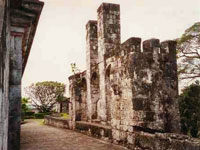
Cebu
The island-province of Cebu is a good springboard for island-hopping in the Visayas. Located in the centre of the Philippine archipelago, it offers travellers easy access to the ca…
Cebu
The island-province of Cebu is a good springboard for island-hopping in the Visayas. Located in the centre of the Philippine archipelago, it offers travellers easy access to the caves, lagoons and dive spots, as well as Carmen, Oslob and Argao beaches. Travellers will find casinos, golf courses and sandy beaches, alongside resort hotels. They should consider visiting in January, when Cebu stages the dazzling Sinulog Festival. Cebu is also the country's oldest Spanish colonial city and has several historic landmarks, such as the original cross planted by Magellan in 1521. Downtown Cebu is dominated by Colon Street, which is the country's oldest street and dates back to the 16th century.
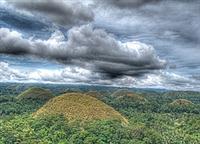
The Chocolate Hills
The Chocolate Hills in Bohol Province are one of the Philippines' most iconic tourist attractions, consistently ranked among the top destinations in the country. Nature lovers will…
The Chocolate Hills
The Chocolate Hills in Bohol Province are one of the Philippines' most iconic tourist attractions, consistently ranked among the top destinations in the country. Nature lovers will be mesmerised by the sight of these unique conical hills, which number between 1,200 and 1,800. Formed from grass-covered limestone, the hills transform into a rich chocolate-brown colour at the end of the dry season, usually around April or May. Recognised as a UNESCO World Heritage Site, the Chocolate Hills offer an otherworldly landscape that's unlike anything else on Earth. The view is particularly stunning at dawn and dusk. Visitors should be prepared for a steep climb to the viewing platform, which might be challenging for those who are unfit or elderly.
Website www.chocolatehills.net
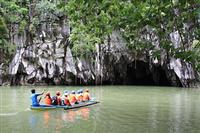
Puerto Princesa Subterranean River National Park
The Puerto Princesa Subterranean River National Park, located in the province of Palawan, lies about 37 miles (59 km) north of Puerto Princesa. Recognised as one of the New Seven W…
Puerto Princesa Subterranean River National Park
The Puerto Princesa Subterranean River National Park, located in the province of Palawan, lies about 37 miles (59 km) north of Puerto Princesa. Recognised as one of the New Seven Wonders of Nature, this underground river attracts numerous tourists each year, with many tour operators offering guided trips. The park is part of a stunning limestone karst mountain landscape, and the river itself winds for approximately five miles (8 km) through a vast cave system before it flows into the South China Sea. Visitors can enjoy a boat ride through the cave complex, where they'll encounter fascinating rock formations and a large population of bats.
Website www.puerto-undergroundriver.com
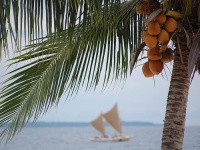
Bohol
Bohol, an island province located southeast of Cebu, is one of the most enchanting destinations in the Visayas. Visitors are drawn to its extraordinary natural wonders, such as the…
Bohol
Bohol, an island province located southeast of Cebu, is one of the most enchanting destinations in the Visayas. Visitors are drawn to its extraordinary natural wonders, such as the rarest seashells in the world and the tarsier, a small, insect-eating primate with large, expressive eyes. Fully grown, the tarsier is about the size of a fist. Bohol is also home to the world-renowned Chocolate Hills, an awe-inspiring formation of 1,200 to 1,800 conical hills that formed from weathered coral deposits millions of years ago. They resemble scoops of chocolate ice cream. In addition to these iconic sights, Bohol boasts stunning beaches and world-class scuba diving spots, with Panglao Island frequently ranked among the best diving destinations globally.
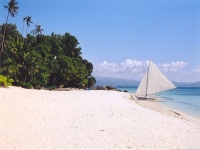
Boracay
Nestled in the western Visayas, the enchanting, butterfly-shaped island of Boracay is a premier destination for sun-seekers from around the globe. Its powdery white sand beach, fri…
Boracay
Nestled in the western Visayas, the enchanting, butterfly-shaped island of Boracay is a premier destination for sun-seekers from around the globe. Its powdery white sand beach, fringed by swaying palm trees, is renowned for its stunning beauty, especially as it seems to glow under the moonlight. Visitors are drawn not only to its pristine landscapes but also to the vibrant mix of hotels, restaurants and nightlife. Boracay offers a wealth of exhilarating water activities, including cliff diving, kiteboarding, snorkelling, windsurfing and scuba diving. With its unspoilt charm and world-class amenities, Boracay has earned its place as one of the world's top beach resort destinations. The ideal time to visit is during the Amihan season, from October to May, when the weather is dry and the island's main beach area remains calm and inviting.
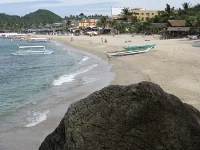
Puerto Galera
Located on the island of Mindoro, Puerto Galera began as a refuge for Spanish traders in the 16th century. Today, it consists of several towns and beach resorts, which together for…
Puerto Galera
Located on the island of Mindoro, Puerto Galera began as a refuge for Spanish traders in the 16th century. Today, it consists of several towns and beach resorts, which together form one of the country's largest urban areas. Puerto Galera is one of the most sought-after scuba diving locations in the world. Travellers will find many sites within 10 minutes of the three main beaches, where they can explore wrecks, deep trenches and vibrantly colourful reefs. Sabang and White Beach offer an active nightlife, while visitors who want a less-crowded experience should head to one of the island's smaller coves or beaches.


